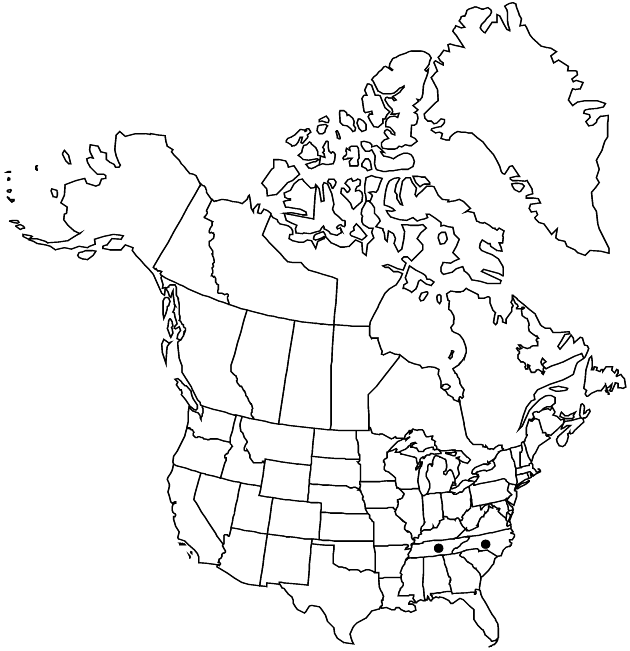Solidago glomerata
Fl. Bor.-Amer. 2: 117. 1803.
Plants 48–95(–100) cm; caudices branching, woody, rhizomes short, thick. Stems 1–5+, ascending to erect, glabrous or moderately hairy in arrays. Leaves: rosettes present at flowering, often in large numbers; basal and proximal cauline tapering to long-winged petioles, blades oblanceolate to elongate-elliptic, 140–300 (including petioles) × 33–63 mm, gradually reduced distally, somewhat fleshy-rubbery (fresh), margins serrate (teeth 8–18), apices acuminate, abaxial faces glabrous, adaxial glabrous or sparsely strigose; mid to distal cauline sessile, blades narrowly lanceolate, 35–72 × 9–16 mm, gradually reduced into arrays, tapering to bases, margins entire to slightly serrate, apices acuminate, faces glabrous or sparsely hairy. Heads 20–230 (1–10 per branch), in leafy, short, axillary and terminal, racemo-paniculiform clusters 8–41(–47) cm. Peduncles 5–12 mm, glabrate to sparsely strigose; bracteoles 0(–1). Involucres campanulate, 10–11 mm. Phyllaries in 3–4 series, unequal, outermost ovate, 2.3–3.6 mm, 1-nerved, apices obtuse to acute, innermost linear-oblong, 1–3-nerved (on at least some involucres), apices obtuse to blunt. Ray florets 6–13; laminae 3.3–5 × (1.5–)2–3(–3.5) mm. Disc florets 12–29; corollas 3.7–5.1 mm, lobes 1.5–2.3 mm. Cypselae (obconic) 2–2.6 mm, glabrous or sparsely strigose; pappi 4.8–5.7 mm. 2n = 108, 126.
Phenology: Flowering Sep–Oct.
Habitat: In shade to full sun, open spruce woods and thickets, exposed rocky outcrops
Elevation: 1500–2000 m
Discussion
Solidago glomerata is found only at the highest elevations of the southern Appalachian Mountains. The cytovoucher for a report from South Carolina is for a specimen of S. faucibus.
Selected References
None.
